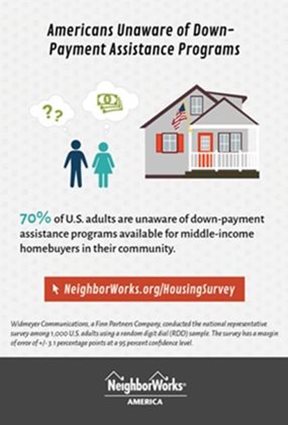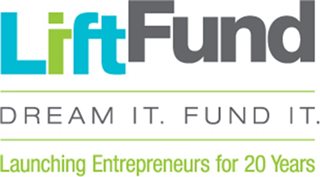
This year, NeighborWorks America is focusing on “creating economic opportunities” in all four of the Wednesday symposia at its training institutes. To whet your appetite, I excerpt from the new book “What It’s Worth” a few of the authors’ solutions to various aspects of the financial crisis among America’s communities and families. Read the first and second parts. In this final installment, I start with the observations of our own CEO, Paul Weech.
It all starts with stable housing 
“Starting at Home: Housing-Based Approaches to Financial Stability,” Paul Weech, NeighborWorks America CEOInstability in both personal finances and shelter require services that promote stable housing and stable household budgets. That’s the focus of the nonprofits that belong to the NeighborWorks network.
To rebuild the path to homeownership for families who need time to accrue savings and repair credit, policymakers should consider how to expand the availability of hybrid tenure models, such as lease-to-own options, community land banking and shared-equity models. Homebuyer education and counseling must be embedded into the housing finance system. The costs of these services should be shared among all of the parties that benefit from a system that produces ownership-ready homebuyers.
The success of these programs often depends on strong nonprofits, which argues in favor of the development of the “community quarterback” model. The quarterback is the convening organization that articulates the vision, marshals the funding sources and aligns the work of partners.
To keep these organizations financially healthy themselves, the sector and the communities they serve must study social-enterprise models, which apply business-like principles to achieving the organizations’ missions. Social enterprise approaches include charging fees for services, leveraging private capital, taking advantage of economies of scale, adopting advanced branding and marketing techniques; and diversifying revenue sources.
“Stable Housing, Stable Families: Thinking beyond Homeownership,” Rick Lazio, Jones Walker, LLP
 The incentive disparities between homeownership and renting are skewing the system and penalizing renters. Why not create more sophisticated options for targeted housing subsidies and government grants? One idea is to create a tax-advantaged account (like an individual retirement account) in which the default choice is a blended and diversified bond and equity fund. This could be used for limited purposes related to housing, such as for a down payment for a home purchase. It could be funded by rebalancing federal subsidies so they are targeted to individuals and families who want to become homeowners or renters who need an emergency fund to pay their rent during a crisis.
The incentive disparities between homeownership and renting are skewing the system and penalizing renters. Why not create more sophisticated options for targeted housing subsidies and government grants? One idea is to create a tax-advantaged account (like an individual retirement account) in which the default choice is a blended and diversified bond and equity fund. This could be used for limited purposes related to housing, such as for a down payment for a home purchase. It could be funded by rebalancing federal subsidies so they are targeted to individuals and families who want to become homeowners or renters who need an emergency fund to pay their rent during a crisis.And what about creating programs that encourage developers and owners to offer longer (perhaps five- to seven-year) leases for good tenants who commit to staying in a property, given that predictability benefits landlords and tenants alike? Might we develop a sustainable and scalable rent-to-own program? Imagine a financial product that offers Federal Housing Administration or state Housing Finance Agency benefits to owners while occupants are renting. The mortgage could be assumable and the landlords/owners would transfer a portion of the loans to the tenants/homebuyers when they are able to accumulate the necessary down payments and meet other underwriting criteria.
Creating strategies to deal with unforeseen financial emergencies, whether caused by a boiler failure, job loss or an illness, could help significantly reduce financial stress. Maybe it’s time to create a public incentive for private mortgage insurers and employers to offer safe and affordable “rainy day” insurance products to low-income households.
Small businesses revive local economies
“Empowering Entrepreneurs, Strengthening Communities”: Janie Barrera, LiftFund It’s estimated that small businesses account for 60-80 percent of all jobs in the United States, making them vital to a strong local economy. That’s why an increasing number of nonprofits are helping would-be and fledgling entrepreneurs by offering classes and one-on-one counseling on issues such as credit, strategic planning and human resources. Technical assistance such as obtaining the necessary permits and conducting market research also has been found to be valuable.
It’s estimated that small businesses account for 60-80 percent of all jobs in the United States, making them vital to a strong local economy. That’s why an increasing number of nonprofits are helping would-be and fledgling entrepreneurs by offering classes and one-on-one counseling on issues such as credit, strategic planning and human resources. Technical assistance such as obtaining the necessary permits and conducting market research also has been found to be valuable.According to the Bureau of Labor Statistics, just under 80 percent of new businesses are still in existence after the first year of operation. In contrast, the Aspen Institute found that 96 percent of businesses whose owners were supported by such services from LiftFund were still in operation a year later.
In addition, LiftFund borrowers repaid their small business loans at a rate of 97 percent, even though more than 50 percent had a credit score below 650. In fact, applicants who do not initially qualify for one of its loans get a second and sometimes a third look to identify other qualities that may be indicative of their repayment potential.
LiftFund has developed its own online application system a risk-assessment model. Its MMS4 platform, a tailored customer-relationship management system, is available to other CDFIs.
“Making Work Pay—Building Financial Health Improves Employment Outcomes”: Michael Rubinger, Local Initiatives Support Corp.
Breaking the cycle of unemployment and abandonment requires a comprehensive approach. LISC’s Financial Opportunity Centers offer an integrated, or “bundled,” set of three services: employment assistance, financial education and coaching, and access to income supports. The centers’ immediate aim is to help clients increase their monthly net income by reducing expenses through budgeting and improvements in credit scores, securing a sustainable job for those who are unemployed or a higher-paying job for those whose wages or hours are insufficient, and accessing income-boosting benefits such as food stamps, utility assistance or children’s health insurance.
Data indicate that the more intensive the coaching, the more job retention rises. LISC offers three types of counselors — a financial coach, an employment coach and an income-support coach. Many clients want to start with employment services, but it has found that beginning with a financial coach is typically best. When income is not enough to meet monthly expenses, it is much harder to think about the long-term benefits of training for and keeping a job or saving and building good credit. Clients then continue to work with that coach as they move on to employment training.

